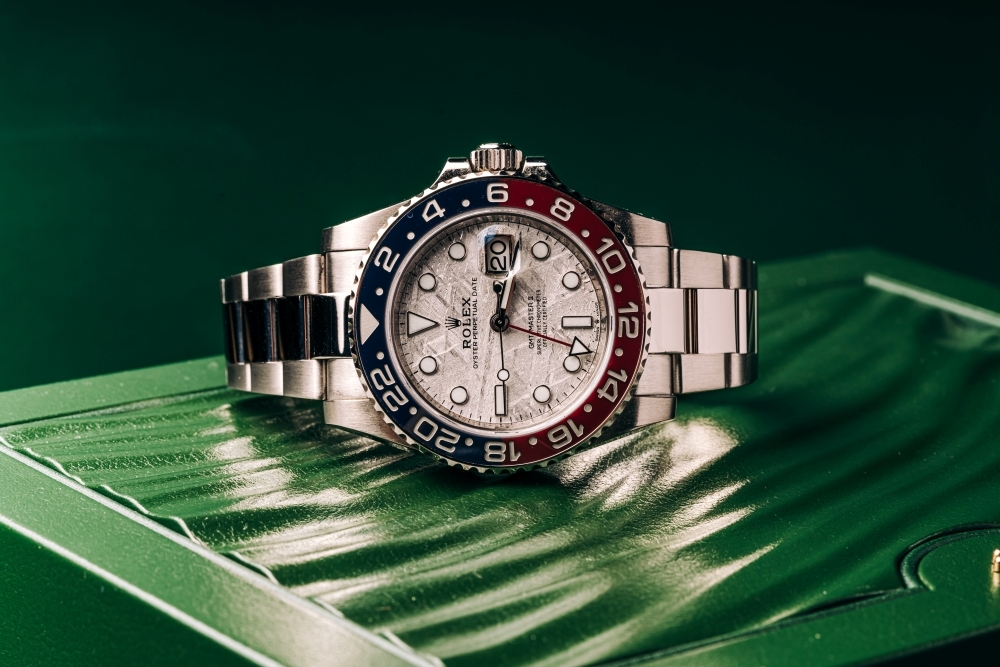What Are the Best High-End Smartwatches in 2025?
When smartwatches first appeared on the market, public response was somewhat mixed. “I’m not even sure we can call it a watch,” one Hodinkee writer noted in an early review of the first Apple Watch. For all its technical proficiency, he admitted, it was simply “not as cool” as a mechanical timepiece. Since then, however, the tech has evolved dramatically. Some models now offer near-medical-grade sensors, satellite connectivity, and month-long battery life. From Garmin’s latest MARQ to brand-forward editions from TAG Heuer and Louis Vuitton, here are six of the most compelling high-end smartwatches on the market today.

Apple Watch Ultra 3
The gold standard for a tech-first timepiece, the third-generation Ultra is Apple’s most technically accomplished watch yet. Built in aerospace-grade titanium with an edge-to-edge OLED display, it’s lighter, brighter, and more power-efficient than its predecessors, engineered to perform in extreme environments.
Slated for release on September 19, 2025, the Ultra 3 brings some major upgrades in both connectivity and health. The biometric suite adds hypertension detection, joining existing tools for heart rate, blood oxygen, ECG, advanced sleep tracking, and temperature monitoring. It also introduces two-way satellite messaging for off-grid communication, alongside enhanced dual-frequency GPS.
As with all Apple Watch models, the trade-off is battery life. Despite improved efficiency, the Ultra 3 runs for just under two days on a single charge – still modest compared to competitors like Garmin’s Fenix 8, which can last up to a month. Dubbed the ‘personal beast’ by Apple, the Ultra 3’s design avoids both maximalism and nostalgia in favour of a clean, slimline profile. For those seeking something more classically styled, the Apple Watch Series 10 is offered with the option of a Hermès strap. It retails upward of AED 3,199.
Garmin Fenix 8 Pro
Also new to the market this September, Garmin’s latest flagship is built with a different kind of user in mind. While brands like Apple lean into phone integration and slick UI, the Fenix 8 Pro is designed first and foremost for performance. The latest Fenix features a 51mm titanium case, MicroLED display with up to 4,500 nits brightness, and satellite messaging via InReach.
This expedition-ready watch has dual-frequency GPS, LTE connectivity, jet lag tracking, real-time stamina updates, and new tools for measuring endurance, hill performance, and recovery. Battery life is among the best on the market – up to 28 days in smartwatch mode, with solar-assisted charging available on select models.
Priced at AED 4,800, the Fenix 8 Pro doesn’t try to replicate the feel of a mechanical watch or mimic traditional design cues. Its appeal lies in durability and depth: it’s water-rated to 100 metres, built to military-grade toughness, and tested in conditions most smartwatches will never see. With TopoActive maps, offline music storage, and a highly customisable interface, this is a smartwatch built for movement – be it on land, sea or summit.
Garmin MARQ
Garmin’s MARQ series takes a more considered design approach than the rugged Fenix. While both watches share much of the same technical architecture, the MARQ is crafted from premium metals, with a slimmer profile and a titanium link bracelet. It comes in a range of variants, including the Aviator, Athlete, and Adventurer, and is housed in Grade-5 titanium with a domed sapphire lens and a 46mm case.
In terms of functionality, the MARQ has dual-frequency GPS, TopoActive mapping, real-time stamina tracking, and offline music storage. Battery life is slightly lower than the Fenix but is still excellent, with around 16 days in smartwatch mode. The AMOLED display is sharp and responsive, and it’s one of the few performance-driven smartwatches that pairs well with a suit. Prices vary based on the model, but most sit at around AED 12,000.
TAG Heuer Connected Calibre E4
A smartwatch for the traditionalist, TAG Heuer’s Connected Calibre E4 has the silhouette and tactile weight of a mechanical chronograph. It’s available in both 42mm and 45mm cases, finished in steel or titanium with push-button controls and a rotating crown. Visually, it has more in common with the classic Carrera than with a contemporary smartwatch.
Powered by Google’s Wear OS, the E4 integrates voice control, app syncing, fitness tracking, and Google Pay. The dial is fully customisable, with specialist editions like the Golf and Porsche models adding course mapping and branded design details. A useful travel companion, the watch also supports on-wrist translation.
While it doesn’t match Garmin or Apple on biometrics or battery life, the Calibre E4 stands out for its craftsmanship and design integrity, rooted firmly in the Swiss tradition. Prices start from around AED 5,400.
Tissot T-Touch Connect Solar
If constant connectivity isn’t your goal, Tissot’s T-Touch Connect Solar is one of the most unique smartwatches on the market. Part analog, part digital, this hybrid timepiece has a Swiss quartz movement with a discreet digital display beneath the dial. There’s no full touchscreen interface – instead, the sapphire crystal is segmented into a few ‘touch zones’, allowing you to activate features like the compass, altimeter, barometer, and step counter as needed. You’ll also find daily activity metrics, basic notifications, and energy usage data via the T-Connect app.
The most surprising feature here is that the Connect Solar doesn’t need to be charged like other smartwatches. Solar cells beneath the dial keep the battery running for months at a time in connected mode, or up to ten years in watch-only mode. Priced at AED 5,400, it’s a fitting choice for those seeking low-maintenance, long-term reliability with no-frills connectivity.
Louis Vuitton Tambour Horizon Light Up
If Tissot’s T-Touch Connect Solar embraces subtlety, Louis Vuitton’s Tambour Horizon Light Up takes the opposite approach. Designed with a curved sapphire crystal and a glowing ring of animated LV monogram LEDs, it’s as much a fashion statement as it is a connected device. The watch runs on Louis Vuitton’s proprietary operating system (not Google’s WearOS) and syncs easily with iPhone and Android.
Functionality includes travel apps, step tracking, weather updates, and air quality data – but this isn’t a watch built for intense training or biometric deep-dives. Instead, it’s a style-driven piece that puts branding front and centre. Priced at around AED 13,000, the Tambour Horizon comes with interchangeable straps in maison canvas, leather, or rubber.



